Expanding Lake Area on the Changtang Plateau Amidst Global Lake Water Storage Declines: An Exploration of Underlying Factors
Abstract
1. Introduction
2. Materials and Methods
2.1. Study Area
2.2. Materials
2.2.1. Lake Area Data
2.2.2. Glacier Data
2.2.3. Meteorological Reanalysis Data
2.3. Methods
2.3.1. Ratio Threshold Method
2.3.2. Mutations Test
2.3.3. Climatic Diagnosis Based on Euler’s Method
2.3.4. Correlation and Composite Analysis
2.3.5. Coefficient of Variation
3. Results
3.1. Relationship Between Lake Area Change and Precipitation Anomaly
3.2. Relationship Between Glacierized Area and Lake Area Change
4. Discussion
4.1. The Relatively Minor Contribution of Glacial Meltwater to Lake Expansion
4.2. Atmospheric Circulation Dynamics as the Dominant Factor in CTP Lake Expansion
4.3. Divergent Hydrological Trends: Accelerated Lake Expansion in the CTP Versus Global Lake Contraction
5. Conclusions
Author Contributions
Funding
Institutional Review Board Statement
Informed Consent Statement
Data Availability Statement
Acknowledgments
Conflicts of Interest
References
- Da, W.; Rana, S.K.; Bawa, K.; Kunte, K.; Wang, Z. Roof of the world: Home and border in the genomic era. Mol. Ecol. Resour. 2023, 25, e13827. [Google Scholar] [CrossRef]
- Qiu, J. China: The third pole. Nature 2008, 454, 393–397. [Google Scholar] [CrossRef] [PubMed]
- Pritchard, H.D. Asia’s shrinking glaciers protect large populations from drought stress. Nature 2019, 569, 649–654. [Google Scholar] [CrossRef] [PubMed]
- Xiang, L.; Wang, H.; Steffen, H.; Wu, P.; Jia, L.; Jiang, L.; Shen, Q. Groundwater storage changes in the Tibetan Plateau and adjacent areas revealed from GRACE satellite gravity data. Earth Planet. Sci. Lett. 2016, 449, 228–239. [Google Scholar] [CrossRef]
- Yao, T.; Bolch, T.; Chen, D.; Gao, J.; Immerzeel, W.; Piao, S.; Su, F.; Thompson, L.; Wada, Y.; Wang, L. The imbalance of the Asian water tower. Nat. Rev. Earth Environ. 2022, 3, 618–632. [Google Scholar] [CrossRef]
- Tian, F.; Nan, Y.; Ni, G.; Yang, L.; Tang, Q.; Grey, D. Is the Tibetan Plateau really a water tower? Hydrol. Process. 2024, 38, e15103. [Google Scholar] [CrossRef]
- Chen, W.; Liu, Y.; Zhang, G.; Yang, K.; Zhou, T.; Wang, J.; Shum, C.K. What Controls Lake Contraction and Then Expansion in Tibetan Plateau’s Endorheic Basin Over the Past Half Century? Geophys. Res. Lett. 2022, 49, e2022GL101200. [Google Scholar] [CrossRef]
- Immerzeel, W.W.; Lutz, A.F.; Andrade, M.; Bahl, A.; Biemans, H.; Bolch, T.; Hyde, S.; Brumby, S.; Davies, B.; Elmore, A. Importance and vulnerability of the world’s water towers. Nature 2020, 577, 364–369. [Google Scholar] [CrossRef]
- Yao, F.; Livneh, B.; Rajagopalan, B.; Wang, J.; Crétaux, J.-F.; Wada, Y.; Berge-Nguyen, M. Satellites reveal widespread decline in global lake water storage. Science 2023, 380, 743–749. [Google Scholar] [CrossRef]
- Zhang, G.; Luo, W.; Chen, W.; Zheng, G. A robust but variable lake expansion on the Tibetan Plateau. Sci. Bull. 2019, 64, 1306–1309. [Google Scholar] [CrossRef]
- Pu, Y.; Zhan, M.; Shao, X.; Werne, J.P.; Meyers, P.A.; Yao, J.; Zhi, D. Changes in lake area and water level in response to hydroclimate variations in the source area of the Yellow River: A case study from Lake Ngoring. Front. Earth Sci. 2023, 17, 920–932. [Google Scholar] [CrossRef]
- Zhu, L.; Xie, M.; Wu, Y. Quantitative analysis of lake area variations and the influence factors from 1971 to 2004 in the Nam Co basin of the Tibetan Plateau. Chin. Sci. Bull. 2010, 55, 1294–1303. [Google Scholar] [CrossRef]
- Lei, Y.; Yao, T.; Yi, C.; Wang, W.; Sheng, Y.; Li, J.; Joswiak, D. Glacier mass loss induced the rapid growth of Linggo Co on the central Tibetan Plateau. J. Glaciol. 2012, 58, 177–184. [Google Scholar] [CrossRef]
- Song, C.; Huang, B.; Richards, K.; Ke, L.; Hien Phan, V. Accelerated lake expansion on the Tibetan Plateau in the 2000s: Induced by glacial melting or other processes? Water Resour. Res. 2014, 50, 3170–3186. [Google Scholar] [CrossRef]
- Lei, Y.; Yang, K.; Wang, B.; Sheng, Y.; Bird, B.W.; Zhang, G.; Tian, L. Response of inland lake dynamics over the Tibetan Plateau to climate change. Clim. Change 2014, 125, 281–290. [Google Scholar] [CrossRef]
- Zhang, G.; Yao, T.; Shum, C.; Yi, S.; Yang, K.; Xie, H.; Feng, W.; Bolch, T.; Wang, L.; Behrangi, A. Lake volume and groundwater storage variations in Tibetan Plateau’s endorheic basin. Geophys. Res. Lett. 2017, 44, 5550–5560. [Google Scholar] [CrossRef]
- Li, M.; Weng, B.; Yan, D.; Bi, W.; Wang, H. Variation trends and attribution analysis of lakes in the Qiangtang Plateau, the Endorheic Basin of the Tibetan Plateau. Sci. Total Environ. 2022, 837, 155595. [Google Scholar] [CrossRef]
- Wang, L.; Wang, J.; Wang, L.; Zhu, L.; Li, X. Lake evaporation and its effects on basin evapotranspiration and lake water storage on the inner Tibetan Plateau. Water Resour. Res. 2023, 59, e2022WR034030. [Google Scholar] [CrossRef]
- Biskop, S.; Maussion, F.; Krause, P.; Fink, M. Differences in the water-balance components of four lakes in the southern-central Tibetan Plateau. Hydrol. Earth Syst. Sci. 2016, 20, 209–225. [Google Scholar] [CrossRef]
- Zhou, J.; Wang, L.; Zhang, Y.; Guo, Y.; Li, X.; Liu, W. Exploring the water storage changes in the largest lake (Selin Co) over the T ibetan P lateau during 2003–2012 from a basin-wide hydrological modeling. Water Resour. Res. 2015, 51, 8060–8086. [Google Scholar] [CrossRef]
- Vystavna, Y.; Harjung, A.; Monteiro, L.R.; Matiatos, I.; Wassenaar, L.I. Stable isotopes in global lakes integrate catchment and climatic controls on evaporation. Nat. Commun. 2021, 12, 7224. [Google Scholar] [CrossRef] [PubMed]
- Zhou, J.; Wang, L.; Zhong, X.; Yao, T.; Qi, J.; Wang, Y.; Xue, Y. Quantifying the major drivers for the expanding lakes in the interior Tibetan Plateau. Sci. Bull. 2022, 67, 474–478. [Google Scholar] [CrossRef] [PubMed]
- Song, C.; Sheng, Y.; Zhan, S.; Wang, J.; Ke, L.; Liu, K. Impact of amplified evaporation due to lake expansion on the water budget across the inner Tibetan Plateau. Int. J. Climatol. 2020, 40, 2091–2105. [Google Scholar] [CrossRef]
- Lazhu; Yang, K.; Wang, J.; Lei, Y.; Chen, Y.; Zhu, L.; Ding, B.; Qin, J. Quantifying evaporation and its decadal change for Lake Nam Co, central Tibetan Plateau. J. Geophys. Res.-Atmos. 2016, 121, 7578–7591. [Google Scholar] [CrossRef]
- Ma, N.; Szilagyi, J.; Niu, G.-Y.; Zhang, Y.; Zhang, T.; Wang, B.; Wu, Y. Evaporation variability of Nam Co Lake in the Tibetan Plateau and its role in recent rapid lake expansion. J. Hydrol. (Amst.) 2016, 537, 27–35. [Google Scholar] [CrossRef]
- Xu, F.; Zhang, G.; Woolway, R.I.; Yang, K.; Wada, Y.; Wang, J.; Crétaux, J.-F. Widespread societal and ecological impacts from projected Tibetan Plateau lake expansion. Nat. Geosci. 2024, 17, 516–523. [Google Scholar] [CrossRef]
- Jia, B.; Wang, L.; Xie, Z. Increasing lake water storage on the Inner Tibetan Plateau under climate change. Sci. Bull. 2023, 68, 489–493. [Google Scholar] [CrossRef]
- Yang, K.; Lu, H.; Yue, S.; Zhang, G.; Lei, Y.; La, Z.; Wang, W. Quantifying recent precipitation change and predicting lake expansion in the Inner Tibetan Plateau. Clim. Change 2018, 147, 149–163. [Google Scholar] [CrossRef]
- Guo, W.; Liu, S.; Xu, J.; Wu, L.; Shangguan, D.; Yao, X.; Wei, J.; Bao, W.; Yu, P.; Liu, Q.; et al. The second Chinese glacier inventory: Data, methods and results. J. Glaciol. 2015, 61, 357–372. [Google Scholar] [CrossRef]
- Lehner, B.; Grill, G. Global river hydrography and network routing: Baseline data and new approaches to study the world’s large river systems. Hydrol. Process. 2013, 27, 2171–2186. [Google Scholar] [CrossRef]
- Zhang, G. China Lake Dataset (1960s-2020); National Tibetan Plateau/Third Pole Environment Data Center: Beijing, China, 2019. [Google Scholar] [CrossRef]
- Zhang, G.; Yao, T.; Chen, W.; Zheng, G.; Shum, C.; Yang, K.; Piao, S.; Sheng, Y.; Yi, S.; Li, J. Regional differences of lake evolution across China during 1960s–2015 and its natural and anthropogenic causes. Remote Sens. Environ. 2019, 221, 386–404. [Google Scholar] [CrossRef]
- Zhao, R.; Fu, P.; Zhou, Y.; Xiao, X.; Grebby, S.; Zhang, G.; Dong, J. Annual 30-m big Lake Maps of the Tibetan Plateau in 1991–2018. Sci. Data 2022, 9, 164. [Google Scholar] [CrossRef] [PubMed]
- Sun, J.; Yang, K.; Guo, W.; Wang, Y.; He, J.; Lu, H. Why Has the Inner Tibetan Plateau Become Wetter since the Mid-1990s? J. Clim. 2020, 33, 8507–8522. [Google Scholar] [CrossRef]
- Liu, S.; Yao, X.; Guo, W.; Xu, J.; Shangguan, D.; Wei, J.; Bao, W.; Wu, L. The contemporary glaciers in China based on the Second Chinese Glacier Inventory. Acta Geogr. Sin. 2015, 70, 3–16. [Google Scholar] [CrossRef]
- Li, H.; Wang, X.; Choy, S.; Wu, S.; Jiang, C.; Zhang, J.; Qiu, C.; Li, L.; Zhang, K. A new cumulative anomaly-based model for the detection of heavy precipitation using GNSS-derived tropospheric products. IEEE Trans. Geosci. Remote Sens. 2021, 60, 1–18. [Google Scholar] [CrossRef]
- Lozowski, E.; Charlton, R.; Nguyen, C.; Wilson, J. The use of cumulative monthly mean temperature anomalies in the analysis of local interannual climate variability. J. Clim. 1989, 2, 1059–1068. [Google Scholar] [CrossRef]
- Nyatuame, M.; Owusu-Gyimah, V.; Ampiaw, F. Statistical analysis of rainfall trend for Volta region in Ghana. Int. J. Atmos. Sci. 2014, 2014, 203245. [Google Scholar] [CrossRef]
- Lei, Y.; Zhu, Y.; Wang, B.; Yao, T.; Yang, K.; Zhang, X.; Zhai, J.; Ma, N. Extreme lake level changes on the Tibetan Plateau associated with the 2015/2016 El Niño. Geophys. Res. Lett. 2019, 46, 5889–5898. [Google Scholar] [CrossRef]
- Zhang, G.; Yao, T.; Xie, H.; Yang, K.; Zhu, L.; Shum, C.K.; Bolch, T.; Yi, S.; Allen, S.; Jiang, L.; et al. Response of Tibetan Plateau lakes to climate change: Trends, patterns, and mechanisms. Earth-Sci. Rev. 2020, 208, 103269. [Google Scholar] [CrossRef]
- Liu, W.-h.; Xie, C.-w.; Zhao, L.; Wu, T.-h.; Wang, W.; Zhang, Y.-x.; Yang, G.-q.; Zhu, X.-f.; Yue, G.-y. Dynamic changes in lakes in the Hoh Xil region before and after the 2011 outburst of Zonag Lake. J. Mt. Sci. 2019, 16, 1098–1110. [Google Scholar] [CrossRef]
- Wang, X.; Siegert, F.; Zhou, A.-g.; Franke, J. Glacier and glacial lake changes and their relationship in the context of climate change, Central Tibetan Plateau 1972–2010. Glob. Planet Change 2013, 111, 246–257. [Google Scholar] [CrossRef]
- Liu, L.; Jiang, L.; Xiang, L.; Wang, H.; Sun, Y.; Xu, H. The effect of glacier melting on lake volume change in the Siling Co basin (5Z2), Tibetan Plateau. Chin. J. Geophys. 2019, 62, 1603–1612. [Google Scholar] [CrossRef]
- Lei, Y.; Zhou, J.; Yao, T.; Bird, B.W.; Yu, Y.; Wang, S.; Yang, K.; Zhang, Y.; Zhai, J.; Dai, Y. Overflow of Siling Co on the central Tibetan Plateau and its environmental impacts. Sci. Bull. 2024, 69, 2829–2832. [Google Scholar] [CrossRef] [PubMed]
- Trenberth, K.E.; Dai, A.; Rasmussen, R.M.; Parsons, D.B. The changing character of precipitation. Bull. Am. Meteorol. Soc. 2003, 84, 1205–1218. [Google Scholar] [CrossRef]
- Chen, B.; Xu, X.-D.; Yang, S.; Zhang, W. On the origin and destination of atmospheric moisture and air mass over the Tibetan Plateau. Theor. Appl. Climatol. 2012, 110, 423–435. [Google Scholar] [CrossRef]
- Tian, L.; Yao, T.; Numaguti, A. Rainfall stable isotope fluctuation and the water vapor transport process in the southern Qinghai-Tibet Plateau monsoon. Sci. China D 2001, 31, 215–220. Available online: https://www.sciengine.com/doi/pdf/f5247e8d88a9427aaadcc5ba1e71ffec (accessed on 18 October 2024).
- Xu, K.; Zhong, L.; Ma, Y.; Zou, M.; Huang, Z. A study on the water vapor transport trend and water vapor source of the Tibetan Plateau. Theor. Appl. Climatol. 2020, 140, 1031–1042. [Google Scholar] [CrossRef]
- Xinru, X.; Qinglong, Y.; Yuntao, B.; Xianhong, M. The connection between the precipitation and water vapor transport over Qinghai-Tibetan Plateau in summer based on the multiple datasets. Plateau Meteorol. 2018, 37, 78–92. [Google Scholar] [CrossRef]
- Li, Y.; Su, F.; Chen, D.; Tang, Q. Atmospheric water transport to the endorheic Tibetan Plateau and its effect on the hydrological status in the region. J. Geophys. Res. Atmos. 2019, 124, 12864–12881. [Google Scholar] [CrossRef]
- Hu, L.; Xiaoduo, P. An Overview of Research Methods on Water Vapor Transport and Sources in the Tibetan Plateau. Adv. Earth Sci. 2022, 37, 1025. [Google Scholar] [CrossRef]
- Gao, Y.; Cuo, L.; Zhang, Y. Changes in moisture flux over the Tibetan Plateau during 1979–2011 and possible mechanisms. J. Clim. 2014, 27, 1876–1893. [Google Scholar] [CrossRef]
- Qiao, B.; Zhu, L.; Yang, R. Temporal-spatial differences in lake water storage changes and their links to climate change throughout the Tibetan Plateau. Remote Sens. Environ. 2019, 222, 232–243. [Google Scholar] [CrossRef]



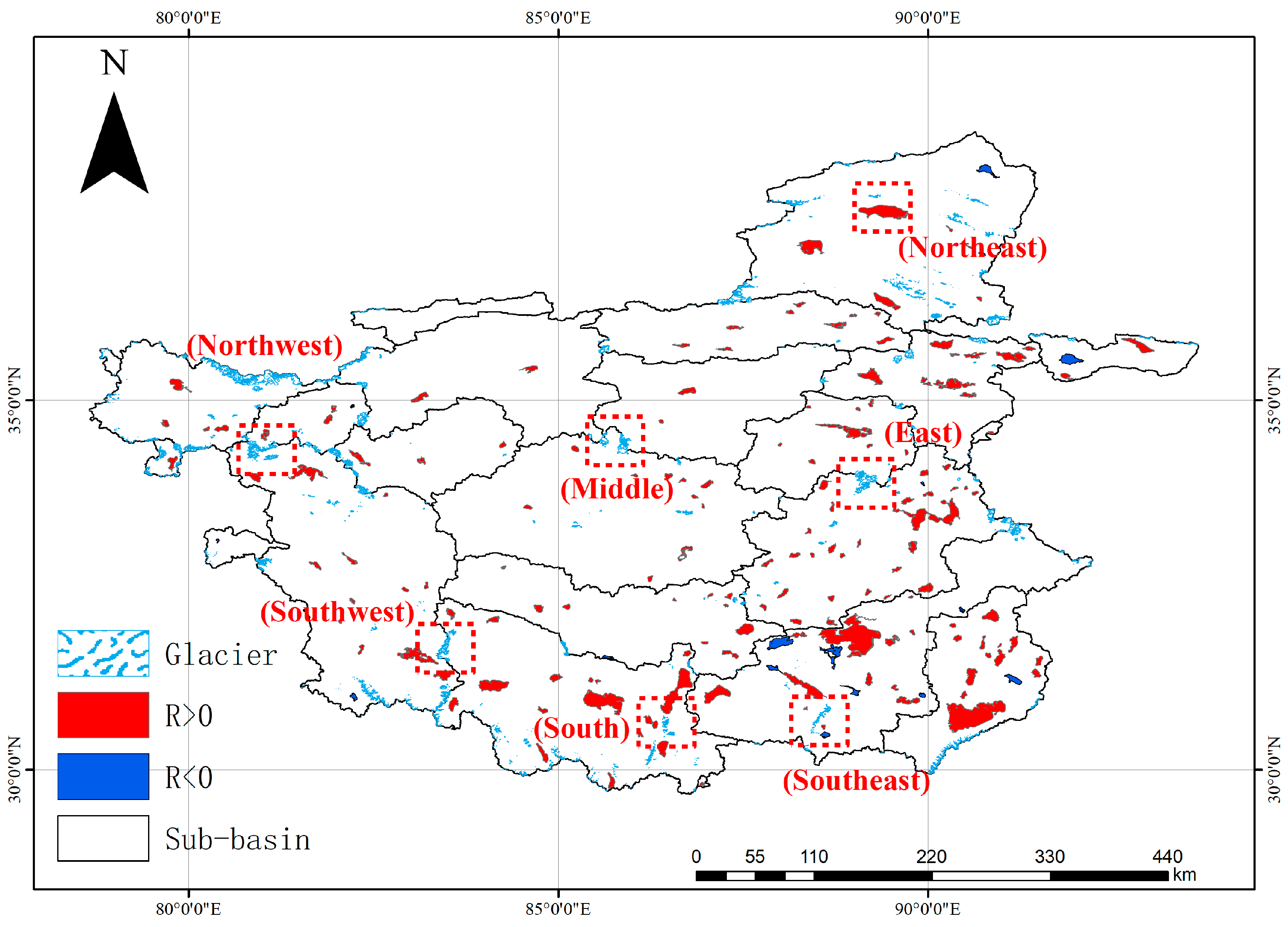

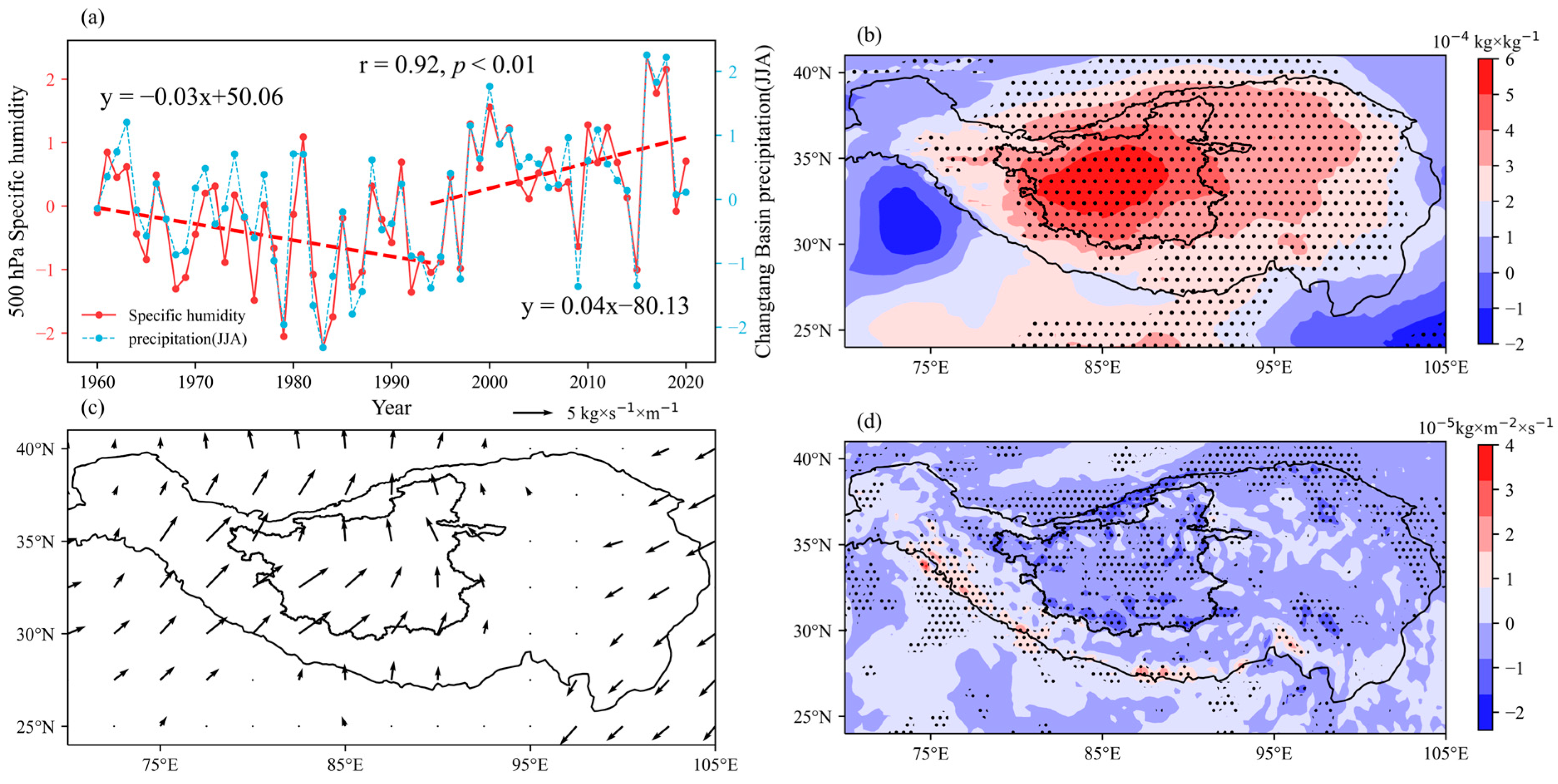
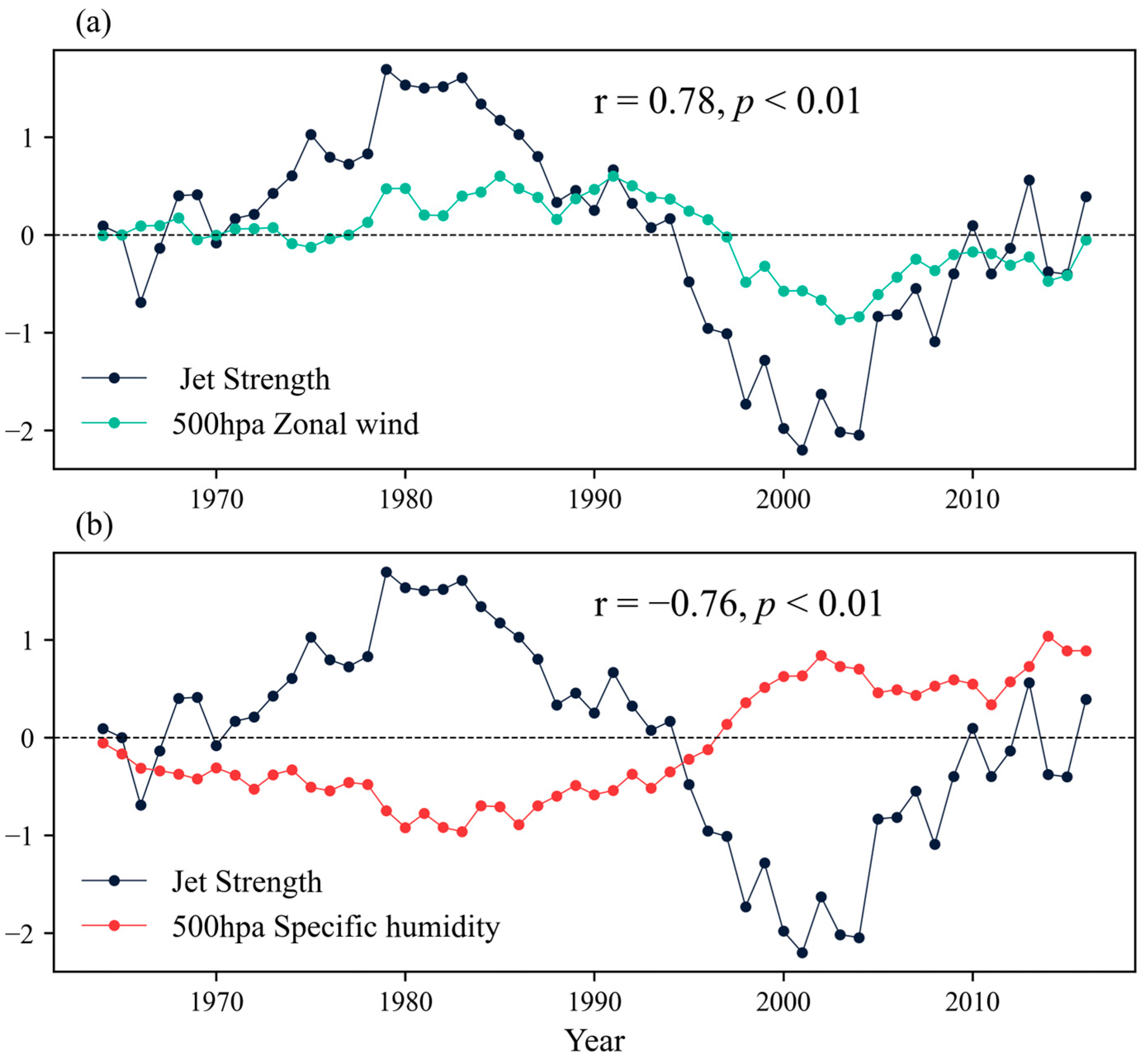
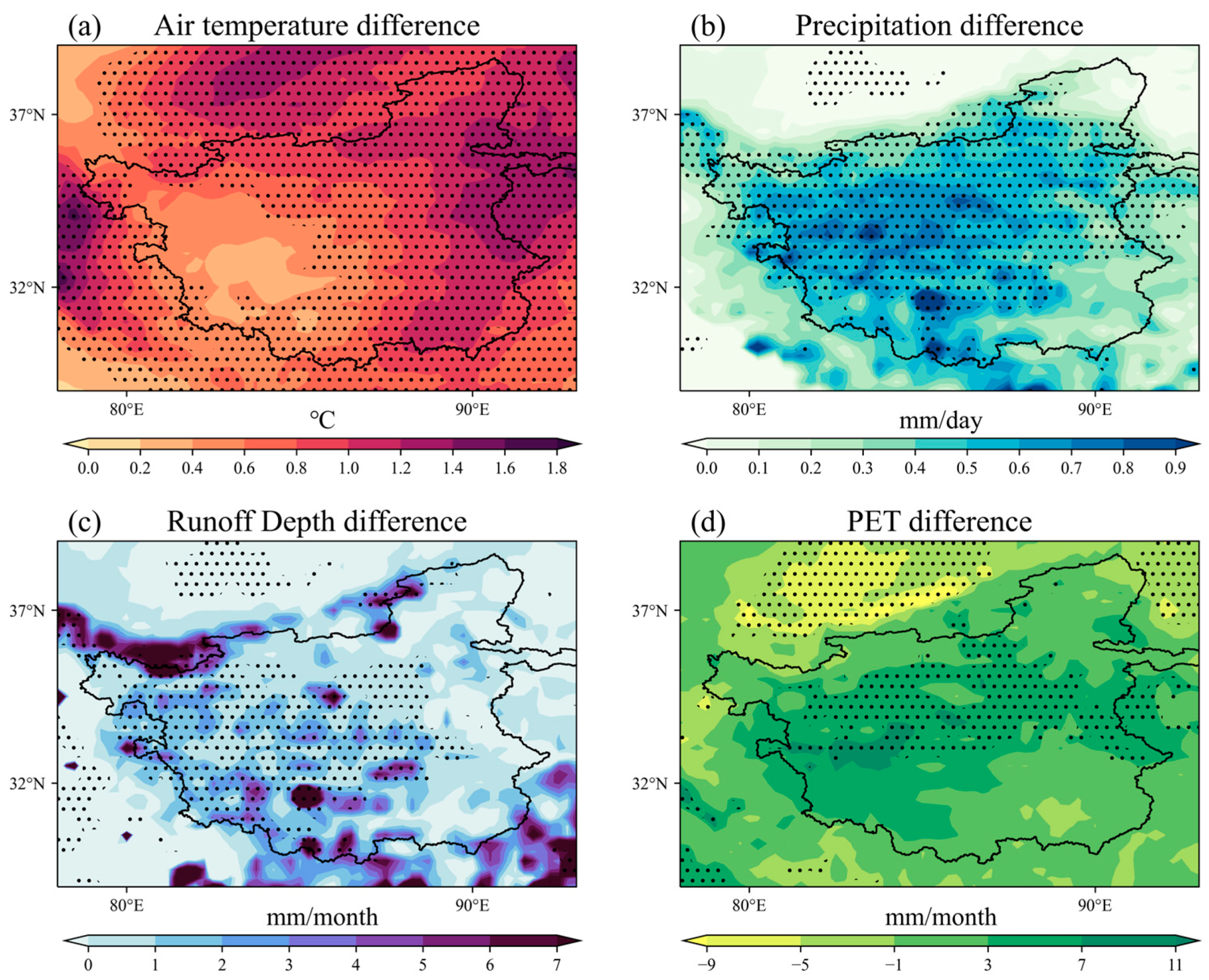
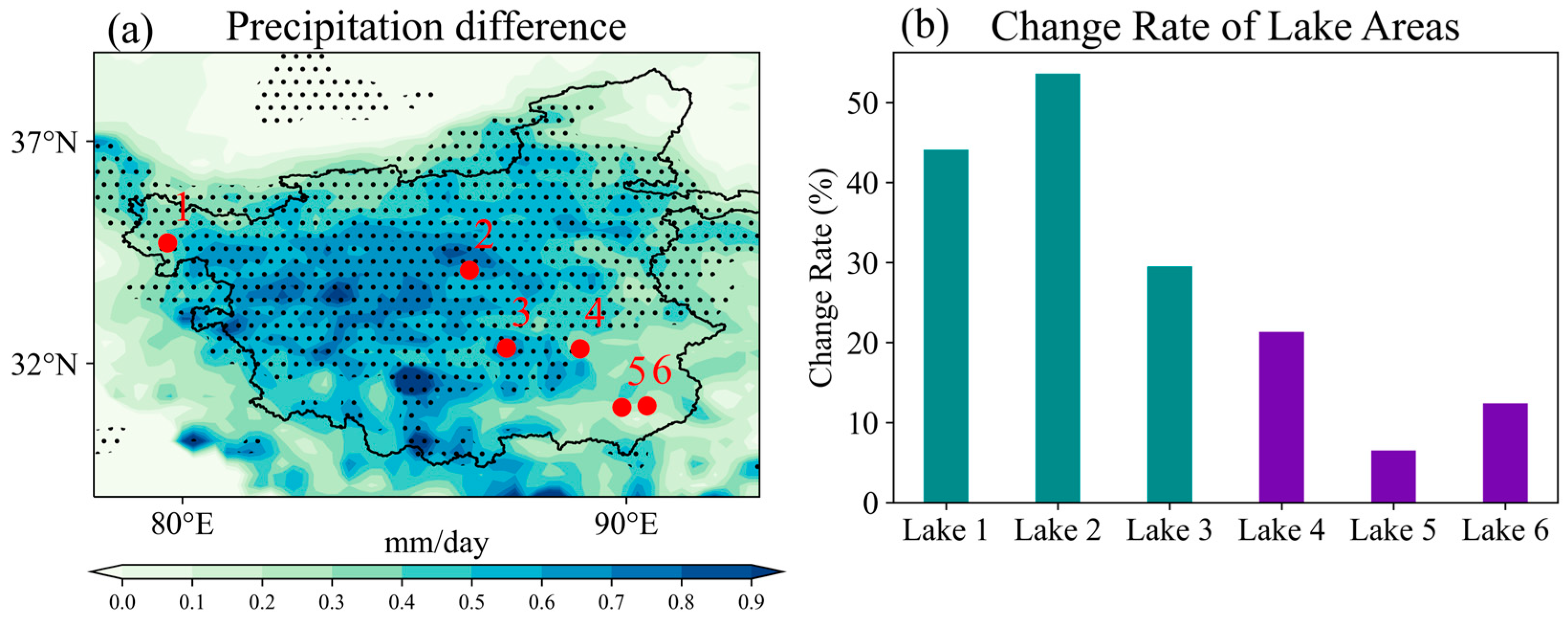
| Dataset | Download Address | Author |
|---|---|---|
| China lake dataset (1960s–2020) [31] | https://poles.tpdc.ac.cn/ (accessed on 12 January 2025) | Zhang, 2019 [32] |
| Annual 30-m big Lake Maps of the Tibetan Plateau in 1991–2018 [33] | https://www.nature.com/sdata/ (accessed on 12 January 2025) | Zhao et al., 2019 [33] |
| Lake ID | Name | Central Latitude (unit: °) | Central Longitude (unit: °) | Altitude (unit: m) |
|---|---|---|---|---|
| 1 | Salikyila Genzhi Tso | 34.684 | 79.690 | 4850 |
| 2 | Garkung Caka | 33.969 | 86.487 | 4920 |
| 3 | Yakgen Tsatso | 32.351 | 87.317 | 4640 |
| 4 | Na Jiang Tso | 32.319 | 88.693 | 4710 |
| 5 | Jiuru Lake | 31.006 | 89.928 | 4580 |
| 6 | Ser Tso | 31.008 | 90.483 | 4550 |
Disclaimer/Publisher’s Note: The statements, opinions and data contained in all publications are solely those of the individual author(s) and contributor(s) and not of MDPI and/or the editor(s). MDPI and/or the editor(s) disclaim responsibility for any injury to people or property resulting from any ideas, methods, instructions or products referred to in the content. |
© 2025 by the authors. Licensee MDPI, Basel, Switzerland. This article is an open access article distributed under the terms and conditions of the Creative Commons Attribution (CC BY) license (https://creativecommons.org/licenses/by/4.0/).
Share and Cite
Zhi, D.; Pu, Y.; Jiang, C.; Hu, J.; Nie, Y. Expanding Lake Area on the Changtang Plateau Amidst Global Lake Water Storage Declines: An Exploration of Underlying Factors. Atmosphere 2025, 16, 459. https://doi.org/10.3390/atmos16040459
Zhi D, Pu Y, Jiang C, Hu J, Nie Y. Expanding Lake Area on the Changtang Plateau Amidst Global Lake Water Storage Declines: An Exploration of Underlying Factors. Atmosphere. 2025; 16(4):459. https://doi.org/10.3390/atmos16040459
Chicago/Turabian StyleZhi, Da, Yang Pu, Chuan Jiang, Jiale Hu, and Yujie Nie. 2025. "Expanding Lake Area on the Changtang Plateau Amidst Global Lake Water Storage Declines: An Exploration of Underlying Factors" Atmosphere 16, no. 4: 459. https://doi.org/10.3390/atmos16040459
APA StyleZhi, D., Pu, Y., Jiang, C., Hu, J., & Nie, Y. (2025). Expanding Lake Area on the Changtang Plateau Amidst Global Lake Water Storage Declines: An Exploration of Underlying Factors. Atmosphere, 16(4), 459. https://doi.org/10.3390/atmos16040459




